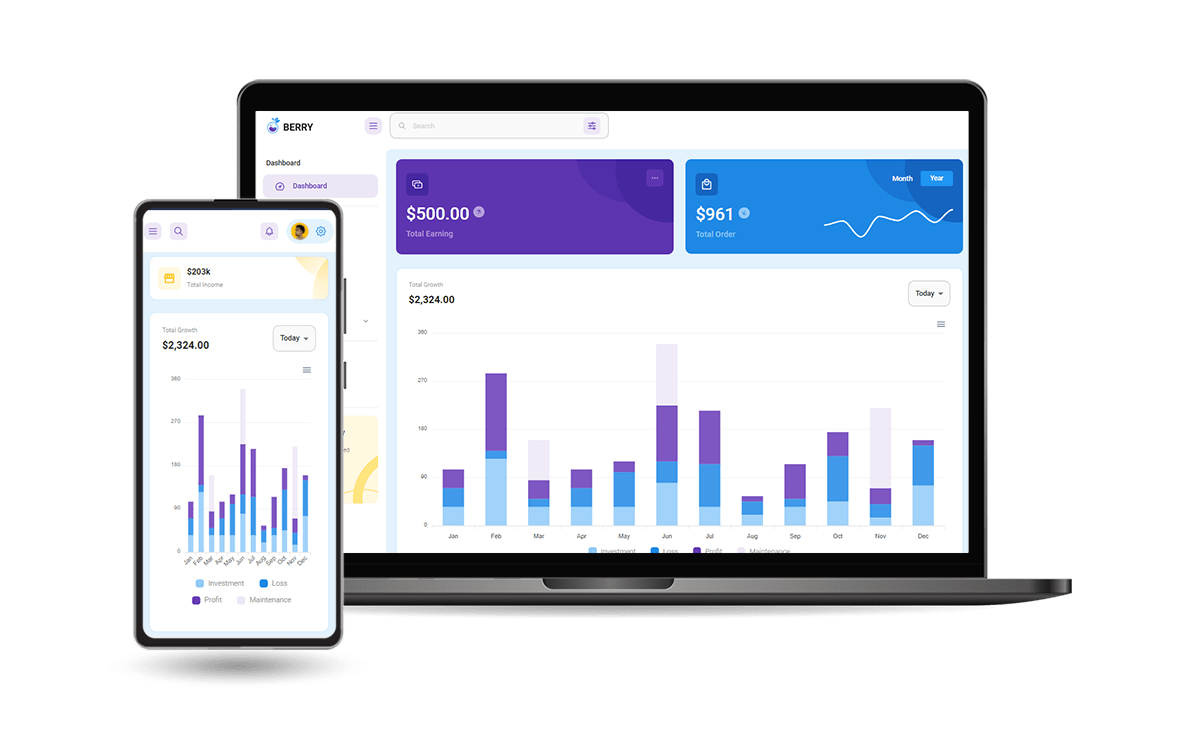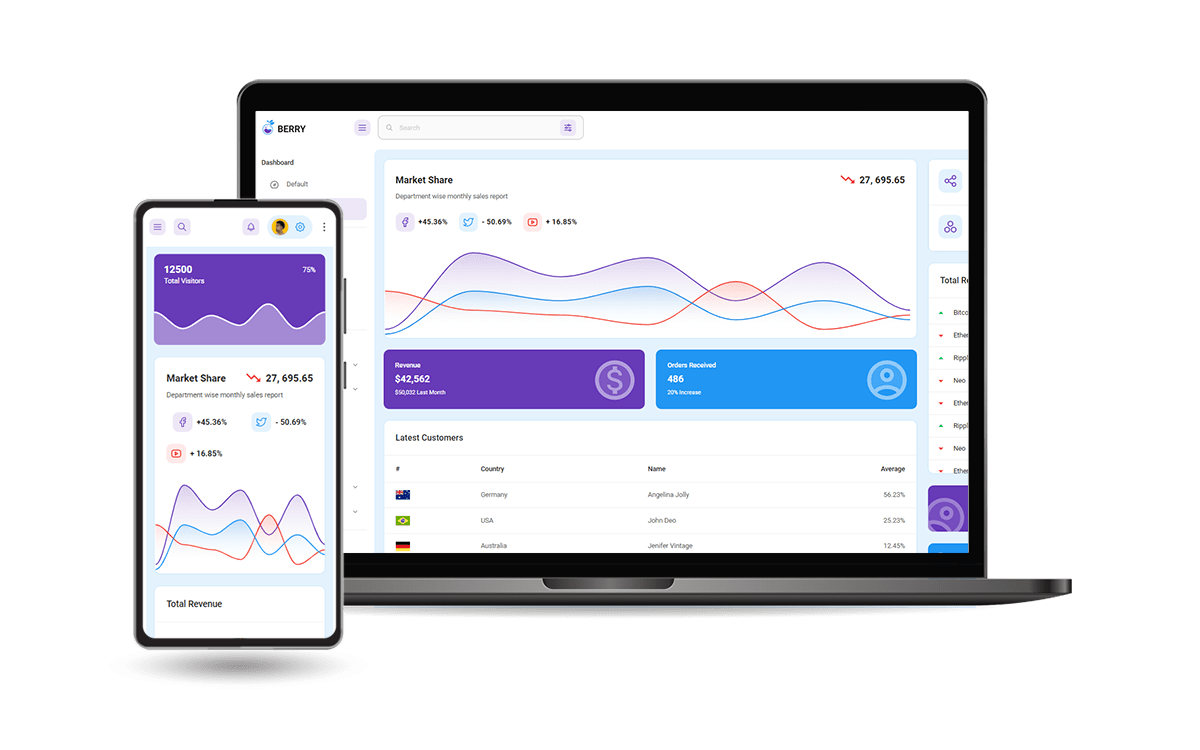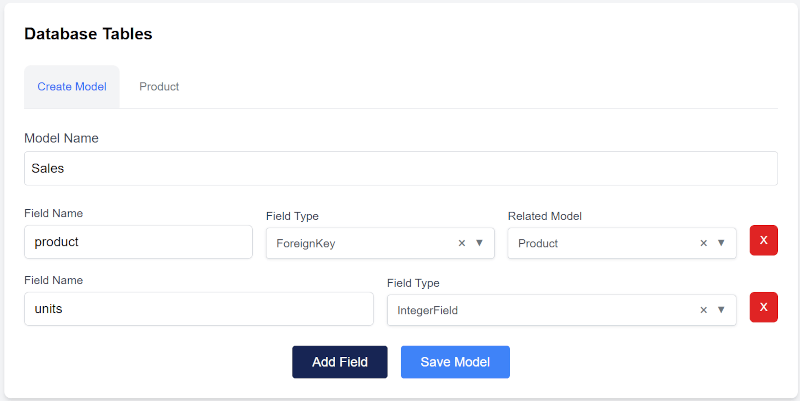Modern template for Django Admin - Berry Dashboard Design
Project description
Berry Dashboard Django Integration
Modern template for Django built with Berry Dashboard, an open-source Bootstrap UI Kit released by CodedThemes.
- Django Admin Berry Dashboard - Documentation & Support Links
- Django Berry Dashboard Dashboard - The product that uses the library
- Getting Started with Django - Learn how to code Django Projects
Features
- Berry Dashboard Design Integration
- Dashboard page
- Color, Typography, Icons
- Authentication: Login, Register
Berry Dashboard Starters
Pre-built starters for coding dashboards and services (APIs, DataTables) with speed.
Django Berry Dashboard
The FREE Version (MIT License) - Live Demo.
- Simple, Easy-to-Extend Codebase
- Berry Dashboard Integration
- Bootstrap Styling
- Dynamic Tables
- Dynamic API
- Charts
- CLI for Coding Tasks
Commit/rollback Git ChangesBackup & restore DBInteract with Django Corevia CLIUpdate Environment variablesUpdate Dependencies
- Session-based Authentication, Password recovery
- DB Persistence: SQLite (default), can be used with MySql, PgSql
- Docker, CI/CD for Render
- Integrate Vite for assets management
Django Berry Dashboard PRO
The premium version provides more features, priority on support, and is more often updated - Live Demo.
- Simple, Easy-to-Extend Codebase
- Berry Dashboard PRO Design Integration
- Bootstrap Styling
- Dynamic Tables - read docs
- Dynamic API - read docs
- Charts
- Session-based Authentication, Password recovery
- OAuth (GitHub & Google)
- DB Persistence: SQLite (default), can be used with MySql, PgSql
- Django CLI Package
- Commit/rollback Git Changes
Backup & restore DB- Interact with Django Core
Manage EnvironmentManage Dependencies
- Session-based Authentication, Password recovery
- DB Persistence: SQLite (default), can be used with MySql, PgSql
- Docker, CI/CD for Render
- Integrate Vite for assets management
Customize with Django App Generator
- Access the App Generator page
- Select the preferred design
- (Optional) Design Database: edit models and fields
- (Optional) Edit the fields for the extended user model
- (Optional) Enable OAuth for GitHub
- (Optional) Add Celery (async tasks)
- (Optional) Enable Dynamic API Module
- Docker Scripts
- Render CI/Cd Scripts
The generated Django project is available as a ZIP Archive and also uploaded to GitHub.
Berry Dashboard Django Integration - Library provided by App-Generator
Project details
Release history Release notifications | RSS feed
Download files
Download the file for your platform. If you're not sure which to choose, learn more about installing packages.
Source Distribution
File details
Details for the file django-admin-berry-1.0.17.tar.gz.
File metadata
- Download URL: django-admin-berry-1.0.17.tar.gz
- Upload date:
- Size: 3.9 MB
- Tags: Source
- Uploaded using Trusted Publishing? No
- Uploaded via: twine/4.0.1 CPython/3.10.4
File hashes
| Algorithm | Hash digest | |
|---|---|---|
| SHA256 |
90f9448c8ff107088e5163f71d12a76745736f60734cd3a5e7552753d261322c
|
|
| MD5 |
d79c24320fbb86aced3668a31fe7db75
|
|
| BLAKE2b-256 |
e8fd7b3ec595c6da29bc46527c9f4d42146be35a03a4eeaae3747ed8089ad95a
|














